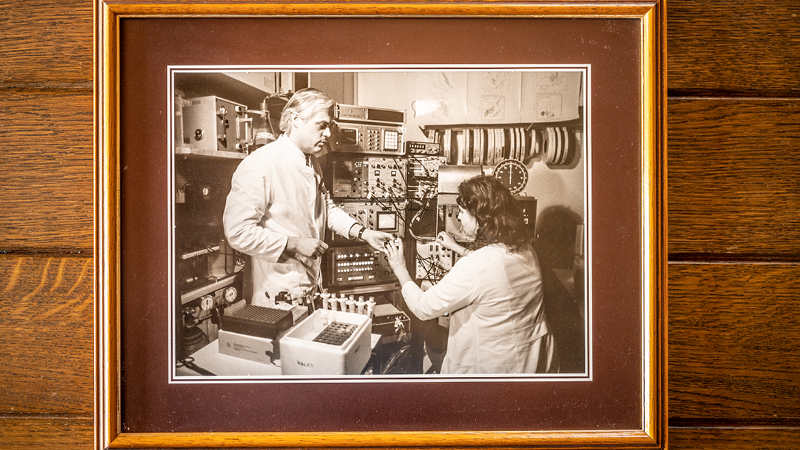Jubilee Lecture
Günter Valet
Founding member of the DGfZ
30 Years DGfZ:
A personal view
Chair and Introduction:
Andreas Radbruch
Rudolf Virchow’s (1821-1902) introduction of cellular pathology, Torbjörn Caspersson’s (1910-1997) quantitative cell DNA and protein measurements and Wallace Coulter’s (1913-1998) electrical cell counting and sizing instrument have stimulated the development of the cell sorter (Fulwyler 1965) and of the first flow cytometer in a modern sense (Kamentsky 1965).
The construction of flow cytometers in European scientific institutions resulted in the first commercial fluorescence flow cytometer ICP-11 (W.Göhde 1969, PHYWE), the hydrodynamic focusing cell volume MPV-1 analyzer (R.Thom 1982, AEG-Telefunken), the MPV-Compact flow cytometer (H.Steen 1982, Leitz), the FLUVO-Metricell (V.Kachel 1983, HEKA-Elektronik) and the Kratel cytometer (W.Eisert, W.Beisker, 1984, Kratel Instruments).
Thursday
October 1, 2020
09:05 – 10:00

The Society for Analytical Cytology (SAC, later ISAC) as scientific background for the new discipline was founded at the 1978 Schloss Elmau conference (K.Goerttler) but developed during the early phase into a scientific marketing organization for US cytometers.
European identity in this environment was maintained by the foundation of the European Society for Analytical Cellular Pathology (ESACP, 1986), the journal Analytical Cellular Pathology (ACP, today Cellular Oncology, IF 4.191 in 2019) and amongst others the Deutsche Gesellschaft für Zytometrie (DGfZ, 1989). In addition, the first scientific society servers (ESACP, DGfZ 1994) were set up on the Internet and practical cytometry knowledge was communicated during the first European flow cytometry courses at the Max-Planck-Institut in Martinsried to more than 200 scientists (1985-93), using initially only European instrumentation.
Cytometry, in contrast to genomics or proteomics analysis is not affected by mixed cell populations during sample preparation, constituting an important advantage for clinical use. Therapy is presently conceived for patient cohorts. The establishment of individualized predictions for therapy dependent disease progression or outcome is highly desirable and constitutes an important scientific challenge for clinicians and clinical cytometrists. Data pattern analysis for individual patients seems promising for clinical research projects at the European level (https://www.classimed.de/classif1.html).
Curriculum
1961-62: studies of theoretical physics, Technical University, Munich
1962-67: studies of medicine, universities of Munich, Freiburg & Montpellier
1965-67: doctoral thesis, Max-Planck-Institut für Biochemie (MPIB), Munich, Dep.Exp.Medicine (Profs.G.Ruhenstroth-Bauer/A.Butenandt)
1968: M.D. University Munich
1968-69: scientific assistant in surgery, gynecology and internal medicine at university hospitals, Munich
1970-71: scientific assistant at MPIB, Munich, Dep.Exp.Medicine
1972-73: research fellow Scripps Clinic and Research Foundation, La Jolla, California, Biochemistry of the Human Complement System (Prof.H.J.Müller-Eberhard)
1973-81: scientific assistant MPIB, Martinsried, Dep.Exp.Medicine
1974: habilitation for Experimental Medicine, University Munich
1981: appointment as Professor of Experimental Medicine, University Munich
1981-1989: head of the independent Mildred-Scheel-Laboratory for Cancer Cell Research of the Dr.Mildred Scheel Foundation for Cancer Research/ Deutsche Krebshilfe at MPIB, Martinsried
1989-2006: head of Cell Biochemistry Group at MPIB, Martinsried
2006 Mai, retirement from MPIB, Martinsried and Ludwig-Maximilian-Universität, Munich (see: Concepts & History of Flow Cytometry at Martinsried & Cytometry Part A 71A:639-642(2007))
